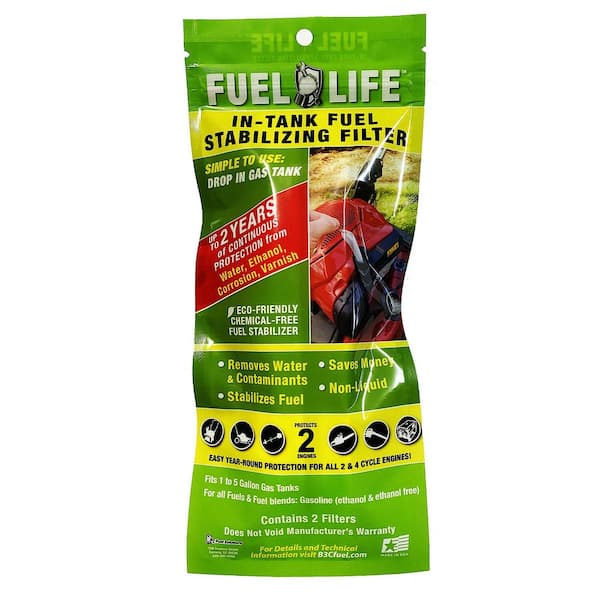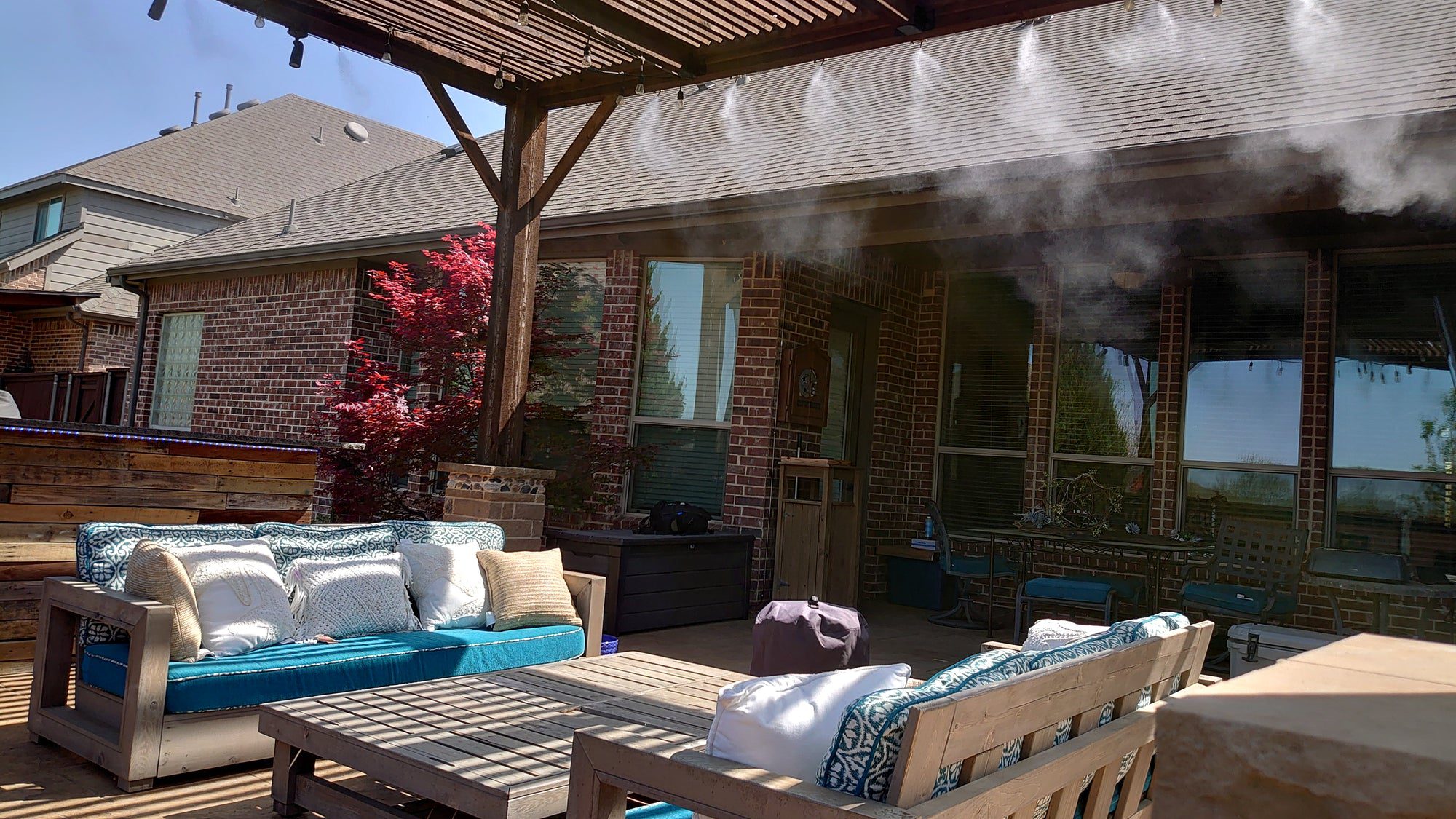Misting system troubleshooting can be done by checking for clogs, leaks, and electrical issues. With a few simple steps, you can identify and resolve common problems with your misting system.
Introducing a misting system to your outdoor space can provide relief from the heat and create a comfortable environment for outdoor activities. However, like any mechanical system, misting systems can encounter issues that require troubleshooting. Understanding how to identify and resolve these issues can ensure your misting system operates efficiently and effectively.
We will discuss common misting system troubleshooting steps to help you diagnose and fix any problems you may encounter. By following these troubleshooting tips, you can keep your misting system running smoothly and enjoy the cooling benefits it provides.
Common Issues
If you’ve ever experienced a problem with your misting system, you know how frustrating it can be. Luckily, many of the issues that can arise with misting systems are common and can be easily resolved. In this section, we’ll discuss the three most common issues, including ‘No Mist,’ ‘Low Mist,’ and ‘Uneven Mist,’ and provide troubleshooting tips to help you get your misting system back up and running smoothly.
No Mist
If you find that your misting system is not producing any mist at all, there are a few possible causes. First, make sure that the water supply to the system is turned on and that there are no restrictions or blockages in the water lines. Additionally, check that the nozzle is clean and free from any debris or mineral buildup. If the nozzle is clogged, it can prevent the mist from being emitted. Finally, check the pump to ensure it is working properly. If the pump is not functioning, it may need to be repaired or replaced.
Low Mist
Low mist output can be a frustrating problem, but it is often an easy fix. Start by checking the water supply to the system to ensure it is turned on fully and delivering an adequate amount of water to the pump. If the water pressure is too low, it will result in a lower mist output. It’s also a good idea to check the nozzle and remove any debris or mineral buildup that may be obstructing the mist. Finally, inspect the pump to ensure it is functioning properly. A faulty pump can also lead to low mist output and may need to be addressed.
Uneven Mist
If you notice that your misting system is producing mist unevenly, with some areas receiving more mist than others, there are a few potential causes to explore. First, check the nozzle and ensure it is clean and free from any blockages. A clogged nozzle can result in uneven mist distribution. Next, evaluate the placement and spacing of the misting nozzles. If they are too far apart or not positioned correctly, it can lead to uneven mist coverage. Finally, consider the water pressure. If the water pressure varies throughout the system, it can cause uneven mist output. Adjusting the pressure regulator may help alleviate this issue.
By troubleshooting these common issues, you can quickly identify and resolve problems with your misting system. Whether it’s addressing the ‘No Mist,’ ‘Low Mist,’ or ‘Uneven Mist’ problem, following these tips will help ensure that your misting system is functioning optimally and providing a refreshing mist whenever you need it.
Solutions
If you are experiencing issues with your misting system, don’t fret. There are simple solutions that you can try to troubleshoot the problem. Check out these common issues and the steps you can take to resolve them.
Check Water Supply
One of the first things you should check when troubleshooting your misting system is the water supply. Ensure that the water source is turned on and that water is flowing correctly. Here are some steps you can take:
- Inspect the water source valve and make sure it is fully open.
- Check for any kinks or blockages in the water line.
- Verify that the supply hose is connected properly to the water source and the misting system pump.
- Test the water pressure by temporarily disconnecting the misting nozzles and turning on the water supply. If water flows freely, the issue may lie in the nozzles themselves.
Adjust Nozzles
If you are experiencing uneven misting or no mist at all, the problem could be related to the position and alignment of the nozzles. Follow these steps to adjust the nozzles:
- Inspect each nozzle and ensure that it is tightly secured in its position.
- Check the orientation of the nozzles. They should be pointing in the direction you want the mist to be dispersed.
- Using a small screwdriver, adjust the nozzle by turning it slightly clockwise or counterclockwise. This will fine-tune the misting pattern.
- Test the misting system again after making adjustments to see if the issue is resolved.
Clean Filters
Clogged filters can significantly impact the performance of your misting system. Regular cleaning is essential to ensure optimal misting. Follow these steps to clean the filters:
- Locate the filter housing on your misting system and remove the filter cartridge or mesh.
- Rinse the filter under running water or soak it in a mild detergent solution to remove any debris or mineral deposits.
- Gently brush the filter with a soft brush to dislodge any stubborn particles.
- Rinse the filter thoroughly to remove any soap residue.
- Allow the filter to dry completely before reinserting it into the filter housing.
- Reassemble the filter housing and test the misting system to see if the issue is resolved.
Maintenance
Proper maintenance of your misting system is essential to keep it running smoothly and effectively. Regular cleaning, replacing nozzles, and inspecting connections are all important steps that you should take to ensure the longevity of your system. In this section, we will discuss each of these maintenance tasks in detail.
Regular Cleaning
Regular cleaning is crucial to prevent clogs and build-up that can impact the performance of your misting system. Over time, debris, dirt, and minerals from the water can accumulate in the nozzles and lines, causing blockages and affecting the spray pattern.
To clean your misting system, start by turning off the water supply and releasing any pressure from the system. Then, remove the nozzles and soak them in a vinegar solution for about 30 minutes to dissolve any mineral deposits. After soaking, use a soft brush or toothbrush to gently scrub the nozzles, ensuring all the clogs are removed.
Next, flush out the lines by running water through them. You can use a low-pressure hose or a clean bucket of water to flush out any remaining debris. Pay extra attention to the filters or screens in your system, as they may also need cleaning or replacement, depending on the manufacturer’s recommendations.
Replacing Nozzles
Over time, nozzles can become worn out or damaged, resulting in inconsistent or weak misting. If you notice reduced performance or irregular spray patterns, it may be time to replace the nozzles.
To replace the nozzles, start by turning off the water supply and releasing any pressure. Carefully unscrew the old nozzles and replace them with new ones of the same type and size. If you are unsure about the correct nozzle type, refer to the manufacturer’s guidelines or consult a professional. Once the new nozzles are installed, turn the water supply back on and test the system to ensure proper functionality.
Inspecting Connections
In addition to cleaning and replacing nozzles, it is important to inspect the connections in your misting system regularly. Check for any leaks, loose fittings, or damaged seals that may affect the overall performance of the system.
Start by visually inspecting the connections and fittings for any signs of wear or damage. Tighten any loose fittings, and replace any damaged seals or connectors as needed. It is also a good idea to check for any potential obstructions or blockages in the lines that may be causing reduced flow.
By regularly cleaning your misting system, replacing worn-out nozzles, and inspecting connections, you can ensure optimal performance and extend the lifespan of your system. Following these maintenance tasks will help keep your misting system in top shape and provide you with a refreshing, cool outdoor experience.

Credit: www.mistersparky.com
Advanced Troubleshooting
When it comes to misting system troubleshooting, sometimes the basic checks just aren’t enough to identify and resolve the issue. In these situations, it’s important to move on to advanced troubleshooting techniques. This section will guide you through the steps to follow when regular inspections and basic testing don’t yield results.
Inspecting Pump
If your misting system is experiencing issues and you’ve already ruled out any obvious problems, it’s time to inspect the pump. Start by checking for any visible signs of damage, such as leaks, cracks, or loose connections. Additionally, examine the pump’s filter to ensure it is clean and not clogged with debris. If any issues are found during this inspection, they must be addressed and resolved before moving on to further troubleshooting.
Testing Pressure
Testing the pressure in your misting system is an effective way to identify potential issues. Begin by turning off the system and disconnecting it from the power source. Then, using a pressure gauge, measure the pressure at various points along the system. Compare the readings to the recommended pressure range specified by the manufacturer. If the pressure is not within the desired range, it may indicate a problem with the pump or the system’s water supply. Addressing this issue can help restore the system’s functionality.
Addressing Electrical Issues
Electrical issues can also contribute to misting system glitches. To address these, start by checking the power supply. Ensure that the system is properly connected to a working power outlet and that all connections are secure. If the system is battery-powered, replace the batteries to rule out any power-related problems. Check the wiring connections to ensure they are tight and intact. Furthermore, inspect the control panel or timer for any signs of damage or malfunction. If any issues are detected during these electrical checks, they must be repaired or replaced to restore the normal functioning of the misting system.
Preventive Measures
Misting systems are a fantastic way to keep cool during hot summer days, but like any mechanical device, they can experience issues over time. By taking a few preventive measures, you can ensure that your misting system operates smoothly and efficiently, providing you with optimal cooling comfort. Here are some important steps to follow to prevent any potential problems:
Proper Installation
One of the most crucial factors in preventing misting system malfunctions is proper installation. When the misting system is installed correctly, it is less likely to experience problems in the future. To ensure proper installation, consider the following:
- Use high-quality materials: Invest in high-quality components for your misting system, including durable hoses, nozzles, and fittings. This will minimize the risk of leaks or breaks in the system.
- Follow the manufacturer’s instructions: Carefully follow the installation instructions provided by the manufacturer. Each misting system may have specific requirements that must be met for optimal performance.
- Check for leaks: After installation, thoroughly inspect the entire system for any signs of leaks. Even minor leaks can lead to reduced efficiency and increased water consumption.
Routine Inspection
Regularly inspecting your misting system is essential to catch any potential issues before they escalate. By conducting routine inspections, you can identify and address problems promptly, preventing further damage. Consider the following tips for effective routine inspections:
- Check for clogged nozzles: Over time, mineral buildup or debris can clog the misting nozzles, reducing the spray quality. Regularly inspect the nozzles and use a small wire or needle to unclog any obstructions.
- Inspect for damaged hoses and fittings: Examine the hoses and fittings of your misting system for any signs of wear, cracks, or damage. Replace any damaged components immediately to prevent leaks or system failures.
- Ensure proper water pressure: Verify that the water pressure of your misting system is within the recommended range specified by the manufacturer. High or low pressure can lead to inefficient operation or damage to the system.
Weather Protection
Protecting your misting system from inclement weather conditions is crucial to its longevity and performance. By taking some proactive measures, you can safeguard your system against potential weather-related issues:
- Provide adequate shade: Excessive exposure to direct sunlight can cause the hoses and fittings of your misting system to deteriorate quickly. Install your misting system in a shaded area or use covers to shield it from direct sunlight.
- Protect against freezing temperatures: If you live in an area where freezing temperatures are a concern, it is important to properly winterize your misting system. Drain the water from the system and insulate exposed pipes to prevent freezing and potential damage.
- Maintain during rainy seasons: Regularly inspect your misting system during rainy seasons to ensure there are no clogged or blocked nozzles. Leaves or debris may accumulate and hinder the misting process, resulting in reduced performance.

Credit: www.mistersparky.com

Credit: www.facebook.com
Frequently Asked Questions Of Misting System Troubleshooting
How Does A Misting System Work?
A misting system works by using high-pressure water to create a fine mist that evaporates quickly, reducing the surrounding temperature. The water is pushed through tiny nozzles, creating small droplets that cool the air when they evaporate.
Why Is My Misting System Not Cooling?
There could be several reasons why your misting system is not cooling. It could be due to clogged nozzles, low water pressure, or a malfunctioning pump. Check for any obstructions in the nozzles, ensure sufficient water pressure, and inspect the pump for any issues.
How Do I Unclog Misting System Nozzles?
To unclog misting system nozzles, remove the nozzles from the system and soak them in a cleaning solution overnight. Use a small brush or toothpick to clean the nozzle openings and remove any debris. Rinse the nozzles thoroughly with water before reinstalling them.
How Often Should I Clean My Misting System?
It is recommended to clean your misting system at least once a year, or more frequently if you notice reduced performance. Regular cleaning prevents clogging, maintains optimal functionality, and extends the life of your misting system.
Conclusion
Troubleshooting your misting system doesn’t have to be a daunting task. By following the steps mentioned in this blog post, you can easily identify and resolve common issues like clogged nozzles, low pressure, and leaks. Regular maintenance and proper care are crucial to keeping your misting system in optimal condition, ensuring you can enjoy its cooling benefits all summer long.
- Aggregate Dispatch Software: Revolutionize Your Logistics! - July 19, 2024
- Heavy Haul Dispatch Software: The Ultimate Efficiency Booster - July 8, 2024
- Intermodal Trucking Dispatch Software: Streamline Logistics! - June 27, 2024


